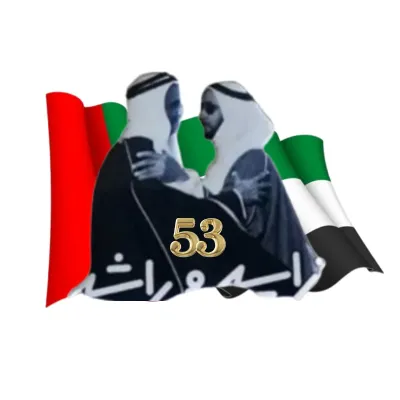Meaning of Colors of Senegal Flag
 What is the Meaning of the Colors of the Senegal Flag?
What is the Meaning of the Colors of the Senegal Flag?
Colors hold profound significance in every culture, weaving into the fabric of traditions, symbolism, and emotions. In Senegal, a country rich in history and cultural diversity, colors are not merely hues on a palette but are deeply imbued with meaning, reflecting the nation's heritage, beliefs, and aspirations. Join me on a captivating journey through Senegal's vibrant spectrum as we unravel the intricate meanings behind its colors.
Design
The flag of Senegal is a tricolor flag consisting of three vertical stripes of equal width. From left to right, the colors are green, yellow, and red. In the center of the yellow stripe, there is a green five-pointed star. Here is a detailed breakdown of the design.
Colors of Senegal Flag
The Radiance of Yellow
In Senegal, yellow embodies the warmth of the sun, symbolizing joy, prosperity, and spirituality. It reflects the country's abundant sunshine and the optimism of its people. For instance, during Senegal's traditional festivals like the Grand Magal of Touba, yellow garments adorn devotees as they celebrate the life and teachings of Cheikh Amadou Bamba.
The Passion of Red
Red pulsates with passion and vitality in Senegal, symbolizing courage, strength, and sacrifice. It is often associated with significant life events, such as weddings and religious ceremonies. The vibrant red of Senegalese fabrics like the iconic "Rouge Boubou" evokes a sense of power and vitality, adorning individuals during celebrations and rites of passage.
The Harmony of Green
Green signifies fertility, renewal, and growth in Senegalese culture. It represents the lush vegetation of the country's landscape and the hope for a prosperous future. From the verdant fields of agriculture to the sacred Baobab trees, green resonates with the interconnectedness of Senegal's people with nature and their aspirations for sustainable development.
Significance and Symbolism
Since its adoption, the Senegalese flag has remained unchanged and continues to serve as a powerful symbol of national pride, unity, and identity.
The flag is prominently displayed in various settings, including government buildings, schools, and during national celebrations and events.
Its colors and design evoke a sense of patriotism and solidarity among Senegalese citizens, reminding them of their shared history and aspirations for the future.
History
The history of the Senegalese flag is closely intertwined with the country's journey to independence and its rich cultural heritage.
Colonial Era (1600s - 1960)
Prior to Senegal's independence, the territory was under French colonial rule. During this period, Senegal did not have its distinct flag, but rather it was represented by the French tricolor flag, which consisted of three vertical stripes of blue, white, and red.
Emergence of Senegalese Identity
As Senegal's quest for independence gained momentum, there arose a need for a symbol that would reflect the nation's distinct identity and aspirations. In the early 20th century, various political and social movements emerged, advocating for self-rule and autonomy.
Flag of the Senegambia Confederation (1982-1989)
When Senegal was part of the Senegambia Confederation with The Gambia, a blue, white, and green tricolor flag was adopted, symbolizing the union between the two nations
Flag of the Mali Federation (1959-1960)
Senegal briefly joined the Mali Federation, which included present-day Mali and Senegal. The federation had its flag featuring green, yellow, and red horizontal stripes.
Flag of the Senegalese Democratic Bloc (1948-1959)
During the struggle for independence, the Senegalese Democratic Bloc, a political party, used a flag with three horizontal stripes of green, yellow, and red, similar to the current flag.
Independence and Adoption of the Current Flag (1960)
On April 4, 1960, Senegal gained independence from French colonial rule. Shortly after independence, the Senegalese government introduced the current national flag, which was officially adopted on August 20, 1960.
The design of the flag was inspired by the flag of the Senegalese Democratic Bloc, which had been used by the country's nationalist movement during the struggle for independence.
Conclusion
In Senegal, colors transcend mere aesthetics, serving as a powerful language of expression, identity, and cultural heritage. From the golden hues of the sun to the deep blues of the ocean, each color carries a story, weaving together the diverse tapestry of Senegal's rich cultural landscape. By understanding the multifaceted meanings behind Senegal's vibrant palette, we gain deeper insight into the traditions, beliefs, and aspirations of its people, fostering a greater appreciation for the beauty and diversity of this dynamic nation.
Spotlight on Trending Promo Gear
Browse the most popular and trending Corporate Gifts
Promotional Sports Water Bottles
Promotional Sports Water Bottles
Promotional Sports Water Bottles
Back To School Gifts
Promotional Sports Water Bottles
Promotional Sports Water Bottles
Promotional Sports Water Bottles
Eco Friendly Bottles




















